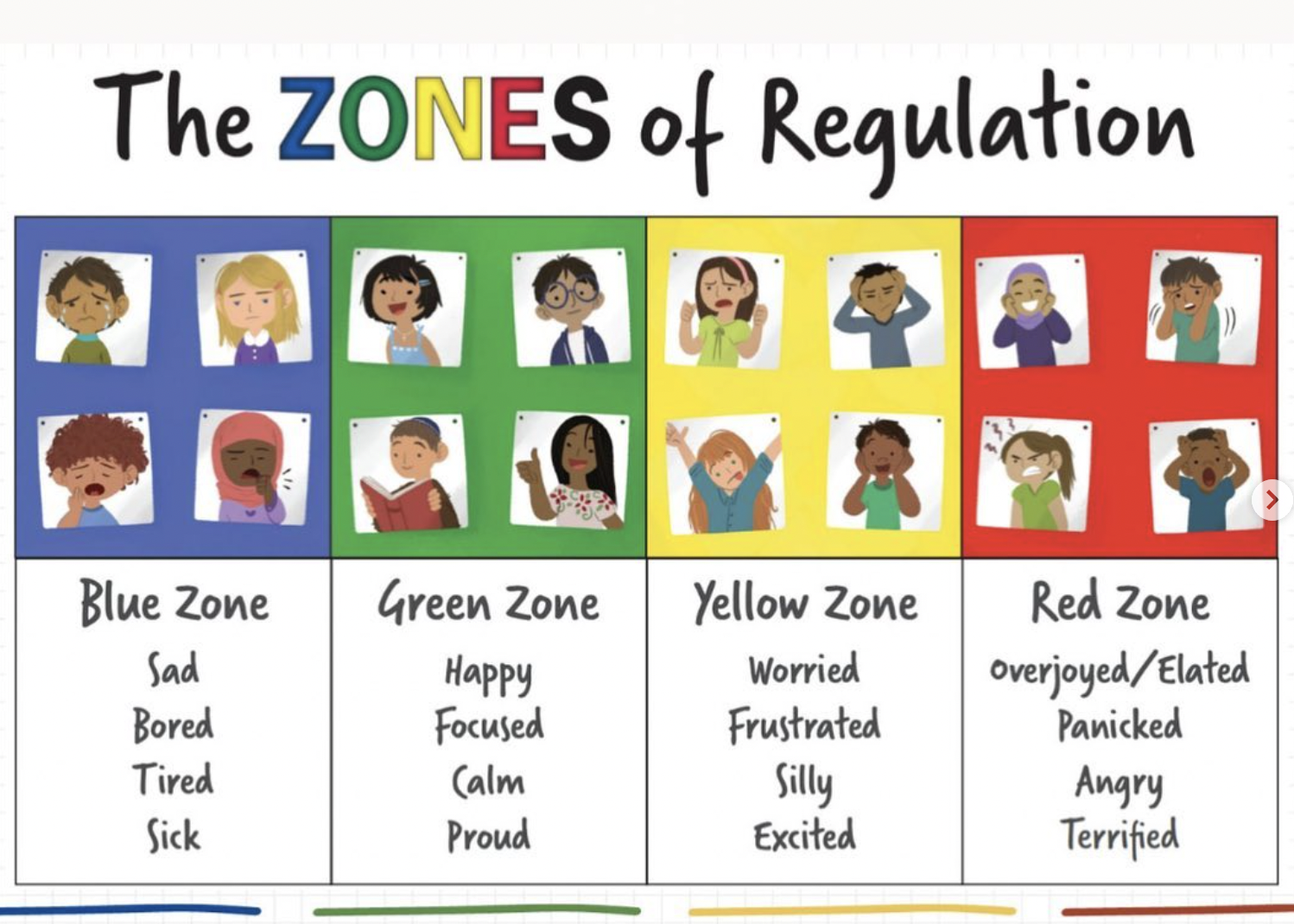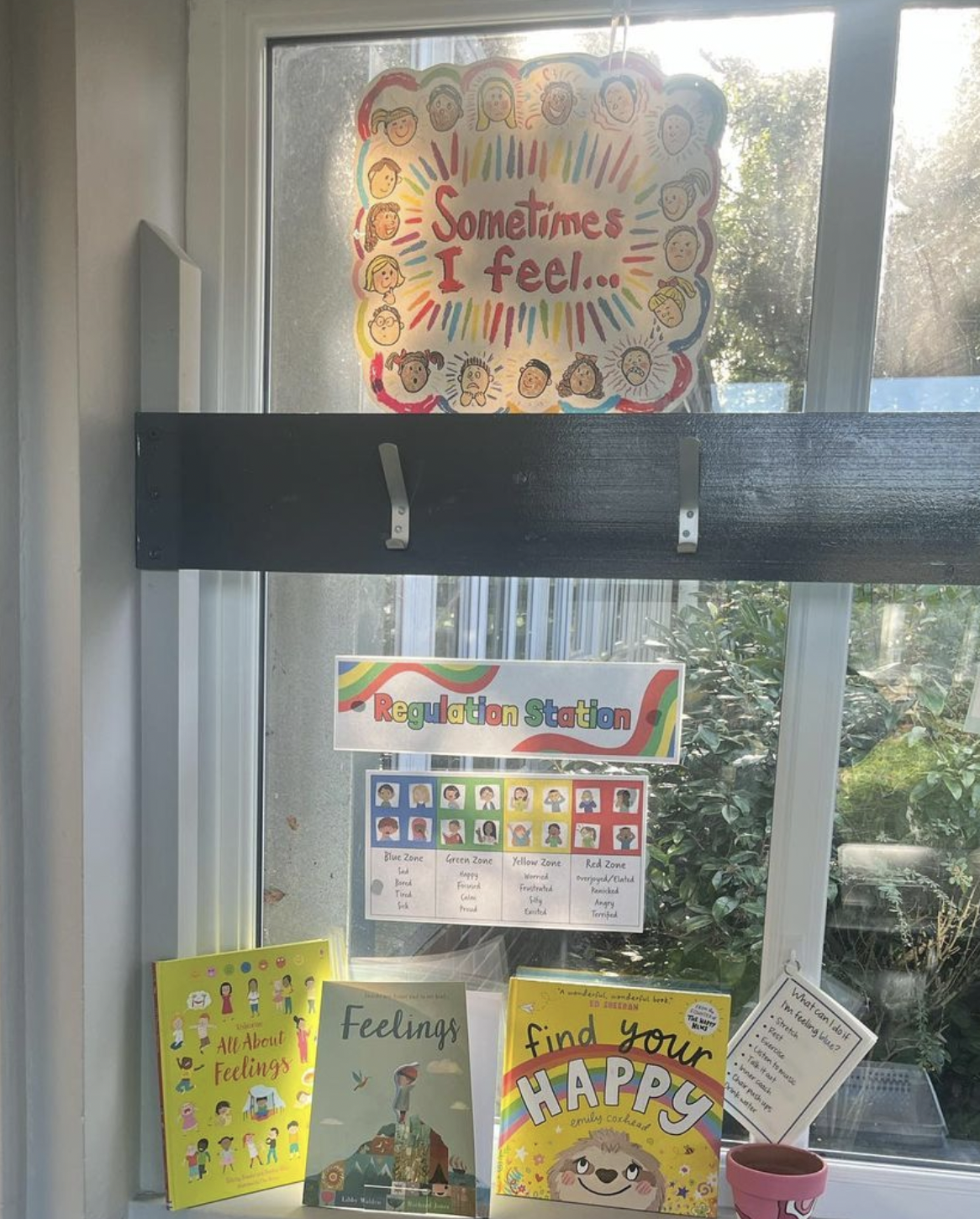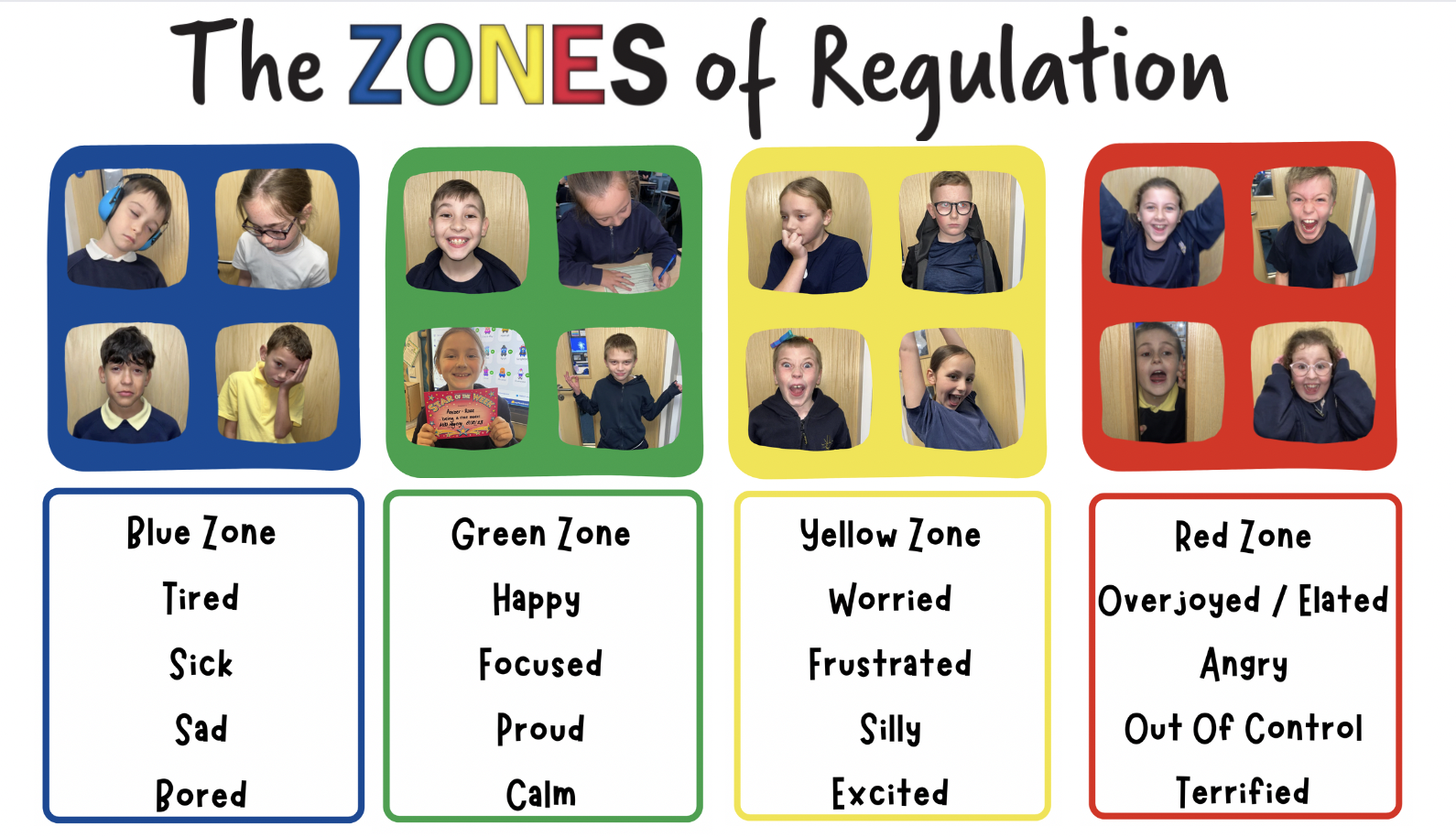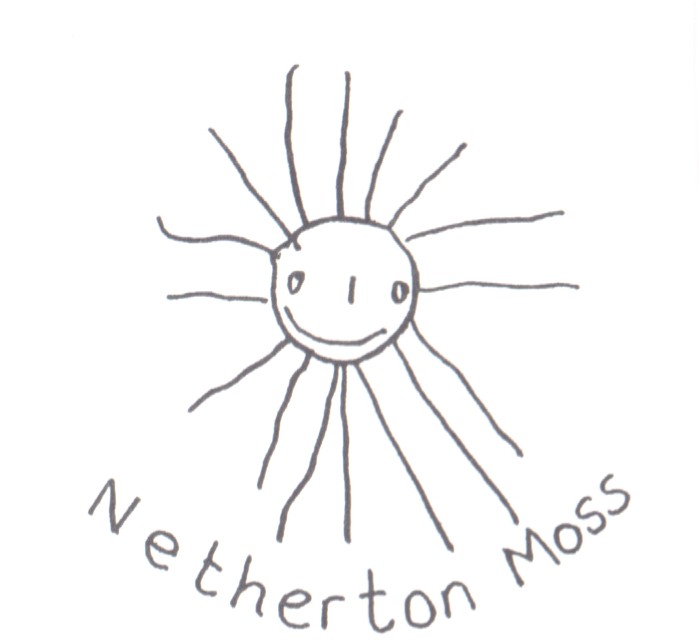Zones Of Regulation
At Netherton Moss Primary School, we recognise the importance of promoting positive mental health and emotional well-being for our students and their families. We aim to create an open culture around the discussion of mental health and well-being and to empower our children to be able to regulate their emotions. By implementing the Zones of Regulation curriculum, we aim to teach our pupils to identify emotions in themselves and others and provide them with a bank of strategies to help regulate their emotions and improve their well-being.
The Zones of Regulation is a curriculum based around the use of four colours to help children self-identify how they’re feeling and categorise it based on colour. The curriculum also helps children better understand their emotions, sensory needs and thinking patterns. Children learn different strategies to cope and manage their emotions based on which colour zone they’re in. Additionally, the Zones of Regulation help children to recognise their own triggers, learn to read facial expressions, develop problem-solving skills, and become more attuned to how their actions affect other people.
There is progression across the curriculum with children in Early Years learning to identify different emotions to children in Upper Key Stage 2, discussing how our behaviour can impact upon the feelings of those around us.
We have set up 'regulation stations' around school for students to explore calming techniques, cognitive strategies, and sensory supports, so they will always have a toolbox of methods to use to move between zones.

Talk through the zones with your child. Ask them how they would feel in each zone?
- Discuss what emotion they feel in each zone e.g. in the yellow zone I may feel worried
- How they physically feel, e.g. in the yellow zone I may have butterflies in my stomach or have sweaty palms (if feeling anxious).
- Then discuss what they might be doing, what are their actions e.g. in the yellow zone would they be pacing around, snapping at others, fidgeting?
- Then, discuss how to help them move into the Green zone, e.g. if I was in the Yellow zone and feeling anxious I might find myself, doing some yoga stretches/ breathing techniques to help me get back into the green zone.
- Create a list of strategies that work for the child and remind the child that we are all unique and the strategies that work for one person might not help them they need to think about what would help them.
Remind them that we will experience all zones and there are no good or bad zones- but our success in regulating our emotions depends on us recognising our emotion, understanding it and putting a support strategy in place.




